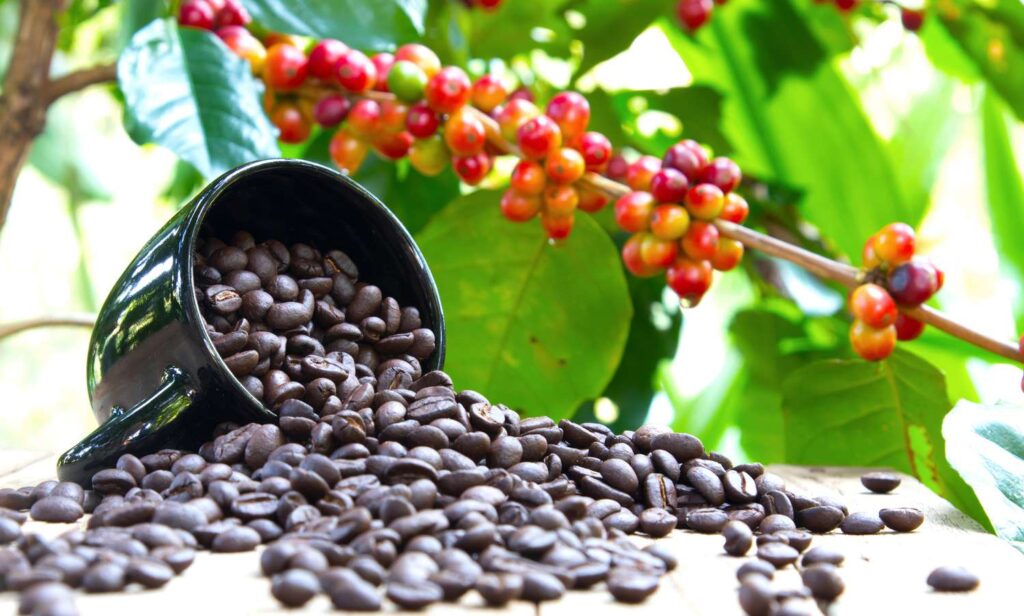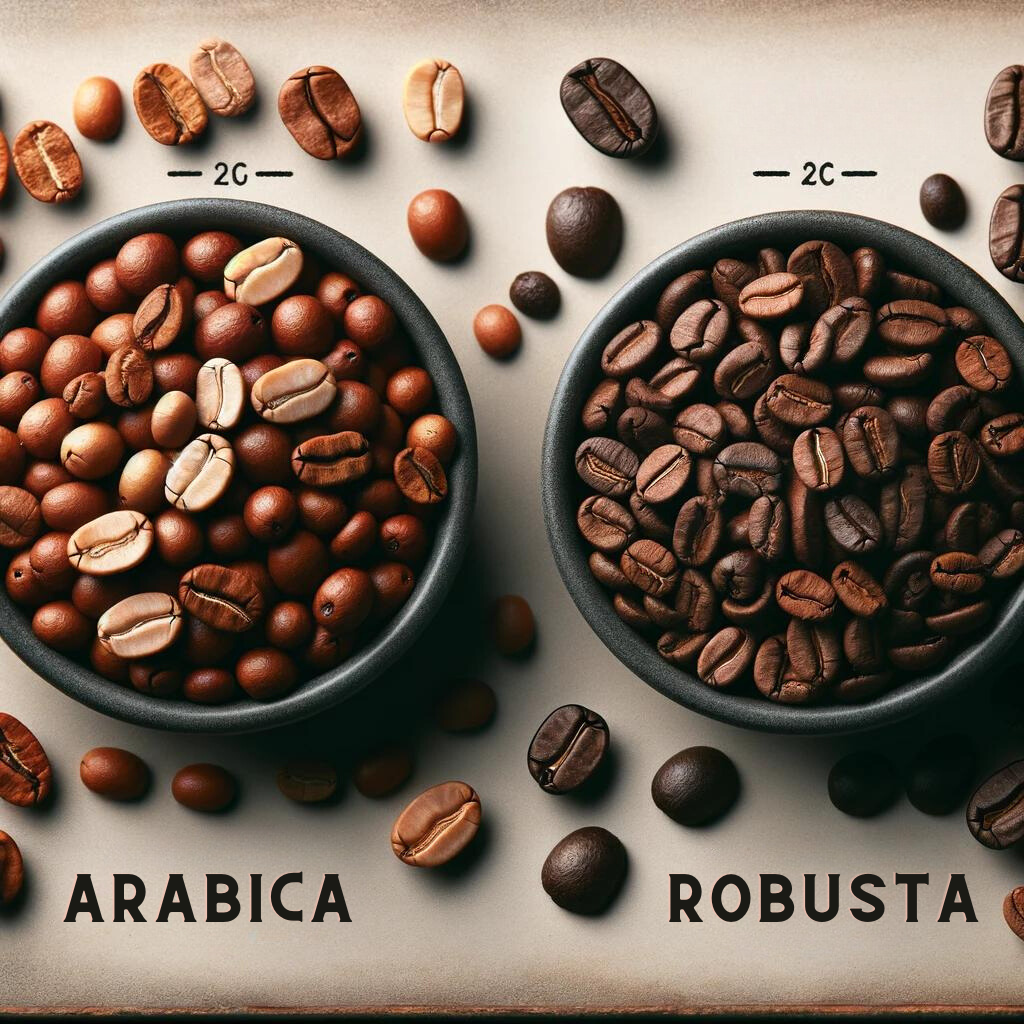Introduction to Arabica Coffee
Arabica coffee, scientifically known as Coffea Arabica, is a beloved beverage enjoyed by millions around the world. Its unique flavor and aroma have captivated coffee enthusiasts for centuries. In this comprehensive guide, we learn about the origins, cultivation, and growing regions of Arabica coffee. A fascinating journey from bean to cup.
Origins and History of Arabica Coffee
Arabica coffee is believed to have originated in the lush highlands of Ethiopia, specifically in the region of Kefa. According to legend, Arab scholars first cultivated Arabica coffee in the 9th century, recognizing its stimulating properties. From Ethiopia, Arabica coffee spread to other regions through trade routes, eventually reaching the Arabian Peninsula and beyond.
Arabica Coffee Growing Regions
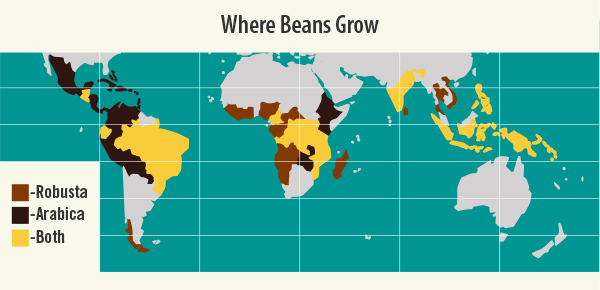
Today, Arabica coffee is grown in various regions around the world, each contributing its unique characteristics to the beans. Let’s explore the major growing regions:
- Central and South America: Countries like Colombia, Brazil, and Costa Rica are renowned for their high-quality Arabica coffee. The volcanic soils and ideal climate in these regions contribute to the development of complex flavors and aromas. For instance, Colombian coffee is often characterized by its nutty undertones and medium body.
- Africa: Ethiopia, the birthplace of Arabica coffee, continues to produce some of the finest beans in the world. Other African countries like Kenya and Tanzania also have renowned coffee-growing regions that produce Arabica beans with unique fruity and floral notes.
- Asia: Countries like Indonesia, India, and the Philippines cultivate Arabica coffee. These regions offer diverse growing conditions, resulting in a wide range of flavor profiles, from earthy and spicy to fruity and sweet.
The “Big 3”: Panama, Ethiopia, and Kenya
Panama, Ethiopia, and Kenya stand out as top producers of Arabica beans. These countries are renowned for their commitment to quality and their ability to produce beans with exceptional flavor profiles that are highly prized in the coffee industry.
Ethiopia: The Birthplace of Arabica Beans
Ethiopia holds the distinction of being the birthplace of Arabica beans, with the tropical highlands providing the ideal conditions for producing high-quality coffee. The rich and fertile soil, combined with the perfect climate, contributes to the exceptional flavor profile of Ethiopian Arabica beans.
Guatemala: Antigua, Coban, and Huehuetanango
In Guatemala, the regions of Antigua, Coban, and Huehuetanango are known for producing some of the finest Arabica beans. The unique microclimates and high altitudes create a perfect environment for growing coffee, resulting in beans with distinct flavors and aromas.
Saudi Arabia: Ancient Tradition of Coffee Cultivation
Saudi Arabia has a long-standing tradition of coffee cultivation, with a focus on producing high-quality Arabica beans. The country’s unique growing conditions, including high altitudes and cooler temperatures, contribute to the development of beans with complex and nuanced flavors.
Colombia: Diverse Growing Regions
Colombia is renowned for its diverse growing regions and dedication to producing top-quality Arabica beans. The country’s varied microclimates and elevations result in a wide range of flavor profiles, making Colombian Arabica beans highly sought after by coffee enthusiasts.
Brazil, Colombia, and Central and South America
Brazil, Colombia, Ethiopia, and several countries in Central and South America are key players in the production of Arabica beans. Each region brings its own unique characteristics to the table, contributing to the global diversity of Arabica coffee.
Arabica Coffee Plant Characteristics
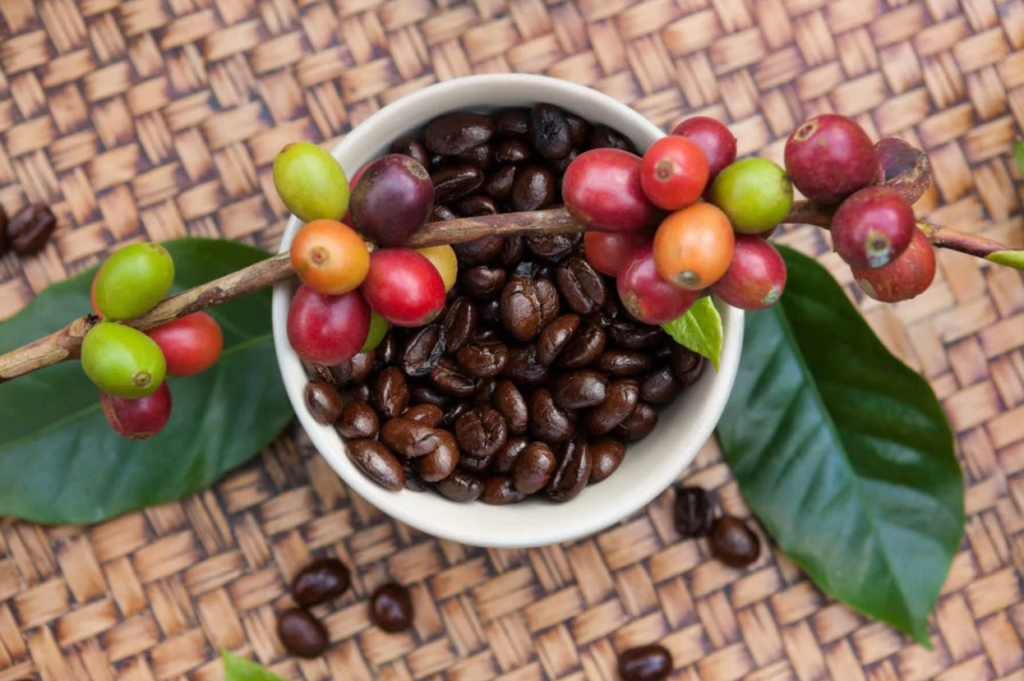
Understanding the Arabica coffee plant is key to appreciating the beans it produces. Arabica coffee trees are evergreen, reaching heights of up to 6 meters. The leaves are glossy and dark green, providing shade to the coffee cherries that grow on the branches.
The flowers of the Arabica coffee plant are white and fragrant, attracting pollinators such as bees. After pollination, the flowers develop into cherries, which are initially green and then turn red when they are ripe. Inside each cherry are two seeds, which we know as coffee beans.
Coffee Consumption and Preferences
Arabica coffee enjoys widespread popularity among coffee enthusiasts and consumers worldwide. Its superior flavor and aroma make it a preferred choice for many. Here are some insights into coffee consumption and preferences:
- Arabica coffee accounts for approximately 60% of global coffee production. Its popularity can be attributed to its superior taste and the demand for specialty coffee experiences.
- While Arabica coffee is favored for its flavor, Robusta coffee is often used in blends and instant coffee due to its higher caffeine content and lower cost. The choice between Arabica and Robusta coffee ultimately depends on personal preferences and the desired coffee experience.
Arabica vs. Robusta Coffee
Arabica and Robusta are the two main species of coffee cultivated worldwide. While both have their unique characteristics, Arabica coffee is generally considered superior in terms of flavor and aroma. Here are some key differences between Arabica and Robusta coffee:
- Arabica coffee is known for its complex and nuanced flavors, ranging from fruity and floral to chocolatey and nutty. It has a smoother and more delicate taste compared to the stronger and more bitter flavor of Robusta coffee.
- Arabica coffee generally has a lower caffeine content compared to Robusta coffee. This makes Arabica coffee a popular choice for those who prefer a milder caffeine kick.
- Arabica coffee is often associated with various health benefits. It contains antioxidants and beneficial compounds that may help reduce the risk of certain diseases, such as type 2 diabetes and liver disease.
Varieties of Arabica Coffee
Within the Arabica coffee species, different varieties contribute to the diversity of flavors and characteristics. Here are some notable Arabica coffee varieties:
- Typica and Bourbon: Typica and Bourbon are two classic Arabica coffee varieties that have been cultivated for centuries. They are known for their balanced flavors and pleasant acidity.
- Geisha: Geisha, also spelled Gesha, is a highly sought-after Arabica coffee variety. It originated in Ethiopia but gained popularity in Panama, where it was discovered to produce exceptional flavors with floral and tea-like notes.
- Blue Mountain: Blue Mountain coffee is grown in the Blue Mountains of Jamaica. It is renowned for its mild flavor, bright acidity, and smooth body.
Growing Conditions and Factors Affecting Arabica Coffee
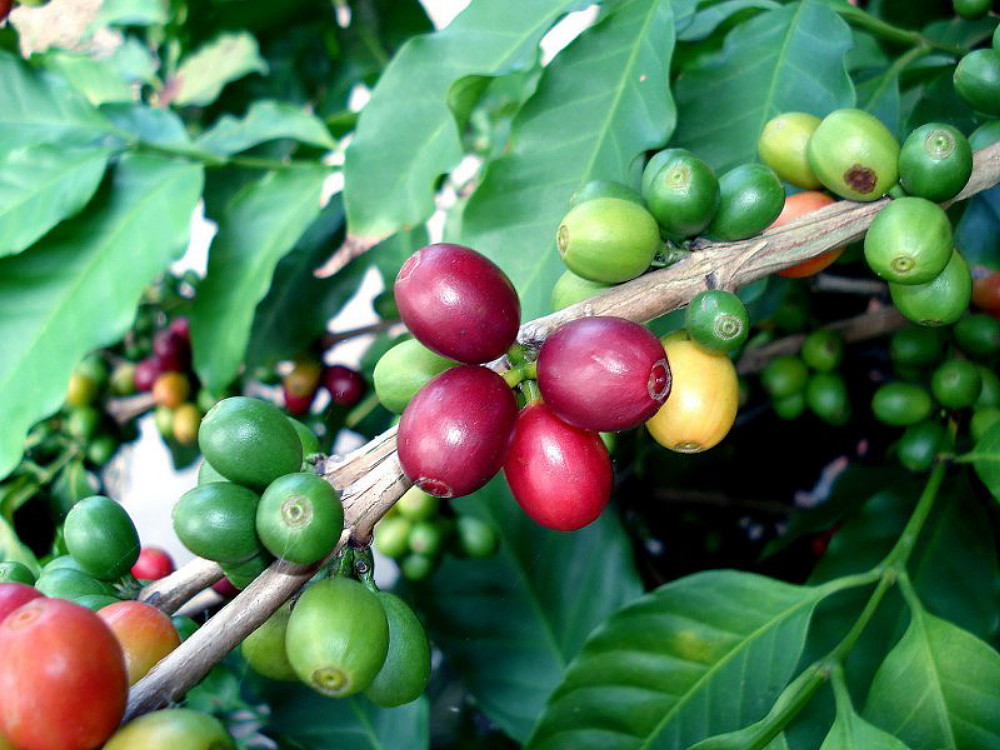
Several factors influence the quality and flavor of Arabica coffee. Here are some key factors that affect its cultivation:
- Altitude and Climate: Arabica coffee thrives at higher altitudes, typically between 600 and 2000 meters above sea level. The cooler temperatures and lower oxygen levels at higher altitudes contribute to the development of desirable flavors and acidity in the beans.
- Rainfall and Temperature: Adequate rainfall is crucial for the growth of Arabica coffee plants. The ideal amount of rainfall varies depending on the specific region, but generally, a well-distributed rainfall pattern throughout the year is favorable.
- Pests and Diseases: Arabica coffee plants are susceptible to various pests and diseases. Common pests include coffee berry borers and leaf rust, while diseases such as coffee leaf rust and coffee wilt disease can devastate entire plantations.
Arabica Coffee Production and Challenges
Arabica coffee is a globally traded commodity, with production taking place in various countries around the world. However, the cultivation of Arabica coffee faces several challenges:
- Global Production and Distribution: Brazil is the largest producer of Arabica coffee, followed by Colombia and Ethiopia. These countries play a significant role in the global coffee market, supplying beans to consumers worldwide.
- Climate Change and Deforestation: Climate change poses a significant threat to Arabica coffee production. Rising temperatures, changing rainfall patterns, and increased incidence of pests and diseases can negatively impact coffee yields and quality.
- Sustainability and Livelihoods: The coffee industry is increasingly focusing on sustainability initiatives to ensure the long-term viability of Arabica coffee production. Fairtrade practices, organic farming methods, and certifications such as Rainforest Alliance and UTZ are aimed at promoting sustainable livelihoods for coffee farmers and protecting the environment.
Arabica coffee: a worldwide favorite
Arabica coffee is grown in diverse regions around the world, each contributing to the unique flavors and aromas that coffee enthusiasts appreciate. From its origins in Ethiopia to the lush plantations of Central and South America, Arabica coffee has a rich history and a bright future. By understanding the growing regions and cultivation process of Arabica coffee, we can better appreciate the journey from bean to cup.
